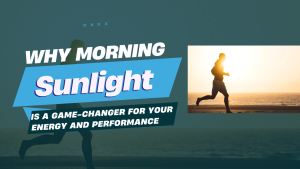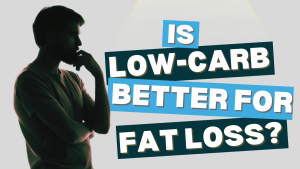Why Morning Sunlight is a Game-Changer for Your Energy and Performance
By PT Fitness Albury Wodonga
If you’re looking for a simple, science-backed way to boost your energy, improve your mood, and get more out of your training sessions, there’s one underrated habit you should add to your routine: morning sunlight exposure.
At PT Fitness Albury Wodonga, we’re all about giving our clients real strategies that work—and getting sunlight in the morning is one of the easiest and most effective ways to support your health, performance, and recovery.
☀️ Why Morning Sunlight is So Important
Your body runs on a natural 24-hour cycle called the circadian rhythm. This rhythm influences everything from energy levels and hormone production to sleep quality and mental focus. Morning light is the key signal your body uses to set this rhythm.
Here’s why it matters for anyone training with us at PT Fitness in Albury Wodonga:
? 1. Boosts Energy and Mental Alertness
When your eyes are exposed to natural sunlight in the morning, it triggers a healthy spike in cortisol—your body's natural “wake-up” hormone. Unlike the stress spikes you want to avoid later in the day, this early cortisol burst helps improve alertness, sharpen focus, and get you mentally prepared for training or work.
Local Tip: Go for a short walk along the Murray River or grab your coffee outdoors in QEII Square for a double win—movement and sunlight.
? 2. Supports Healthy Testosterone and Hormone Balance
Proper hormone regulation is key to improving strength, recovery, and fat loss. Morning light exposure supports natural testosterone production by aligning your sleep-wake cycle and promoting deeper, more restorative sleep at night. When you sleep better, your hormones work better—and so do you.
This is especially important if you’re doing strength or conditioning work with us here in Albury Wodonga.
? 3. Improves Mood and Reduces Stress
Sunlight boosts levels of serotonin, the hormone responsible for feelings of happiness and calm. Higher serotonin during the day helps produce melatonin at night, which means better sleep. And when you sleep better, you train better.
Whether you're new to fitness or a long-time client at PT Fitness, mental clarity and mood stability are critical to staying consistent and motivated.
? How to Add Morning Light to Your Routine
You don’t need to overcomplicate it—just 10–20 minutes of natural sunlight in the morning makes a difference. Here’s how:
-
Step outside within 30 minutes of waking up (no sunglasses—your eyes need the light!)
-
Drink your coffee or eat breakfast outdoors when possible
-
Take a morning walk before heading to work or the gym
Bonus: Combine your morning sunlight habit with your 8,000 steps-a-day goal to double down on your health and fitness progress.
✅ Benefits You’ll Notice
-
Increased energy and focus for your gym sessions
-
Better hormone regulation for strength and recovery
-
Improved sleep quality
-
More stable mood and reduced stress
-
Enhanced fat loss and body composition outcomes
? Sunlight: A Natural Performance Enhancer
At PT Fitness Albury Wodonga, we want to see you perform at your best—inside and outside the gym. Morning sunlight exposure is one of the most accessible tools to help regulate your system, support your goals, and build long-term health habits.
If you train in the morning or work out later in the day, getting that early light exposure will set your body and brain up for success.
Need help building better daily routines for energy, strength, and fat loss?
Come chat with one of our expert personal trainers at PT Fitness Albury Wodonga—we’ll help you design a plan that works.
Is Low-Carb Better for Fat Loss?
One of the most common questions we get from clients is:
"Do I need to go low-carb to lose weight?"
Let’s break down what really matters—and how low-carb diets might help, but aren’t always the magic bullet they seem to be.
It Starts With a Calorie Deficit
As we’ve mentioned before, the #1 rule for fat loss is a calorie deficit. That means you're eating fewer calories than your body burns.
But here’s the real secret: your ability to stick to that deficit—influenced by your macro and micronutrient choices—is what determines your success.
So, Why Do People Love Low-Carb Diets?
Low-carb diets get a lot of hype. One big reason is that people see fast results on the scale—but that initial weight loss isn’t all fat.
Carbohydrates are stored in the body along with water. For every gram of carbs stored, your body holds onto about three grams of water. So when you cut carbs, y drop water weight quickly.
That’s not fat loss—it’s fluid.
Weight Loss vs. Fat Loss
When people say they want to "lose weight," they usually mean lose fat.
Fat loss is slower and steadier—but it’s the meaningful, long-term goal.
Can You Cut Calories by Dropping Any Macro?
Yes! You can create a calorie deficit by cutting:
-
Protein
-
Carbs
-
Fats
-
Or by eliminating entire food groups (which usually removes a macronutrient).
But that doesn’t mean all options are equal in outcome.
Why We Recommend a Balanced Deficit
Rather than slashing just one macro, most clients see the best results when we cut calories evenly from both carbs and fats. Here’s why:
? Low Fat?
Too little fat = hormone issues.
You need fats to produce sex hormones, maintain mood, and feel strong.
? Low Carb?
Too little carb = performance drops.
Carbs are your body’s preferred fuel for exercise and brain function.
Tailor Your Approach to Your Goal
-
If gym performance is a priority: cut less from carbs and more from fat.
-
If general fat loss is the goal: a more balanced cut from both macros works best for most people.
Final Thought: Low-Carb Isn’t Necessary
Low-carb works for some.
But for most people, the best diet is one you can stick to—while maintaining energy, strength, and hormonal health.
Choose your macro split based on your goals, not just scale speed.


